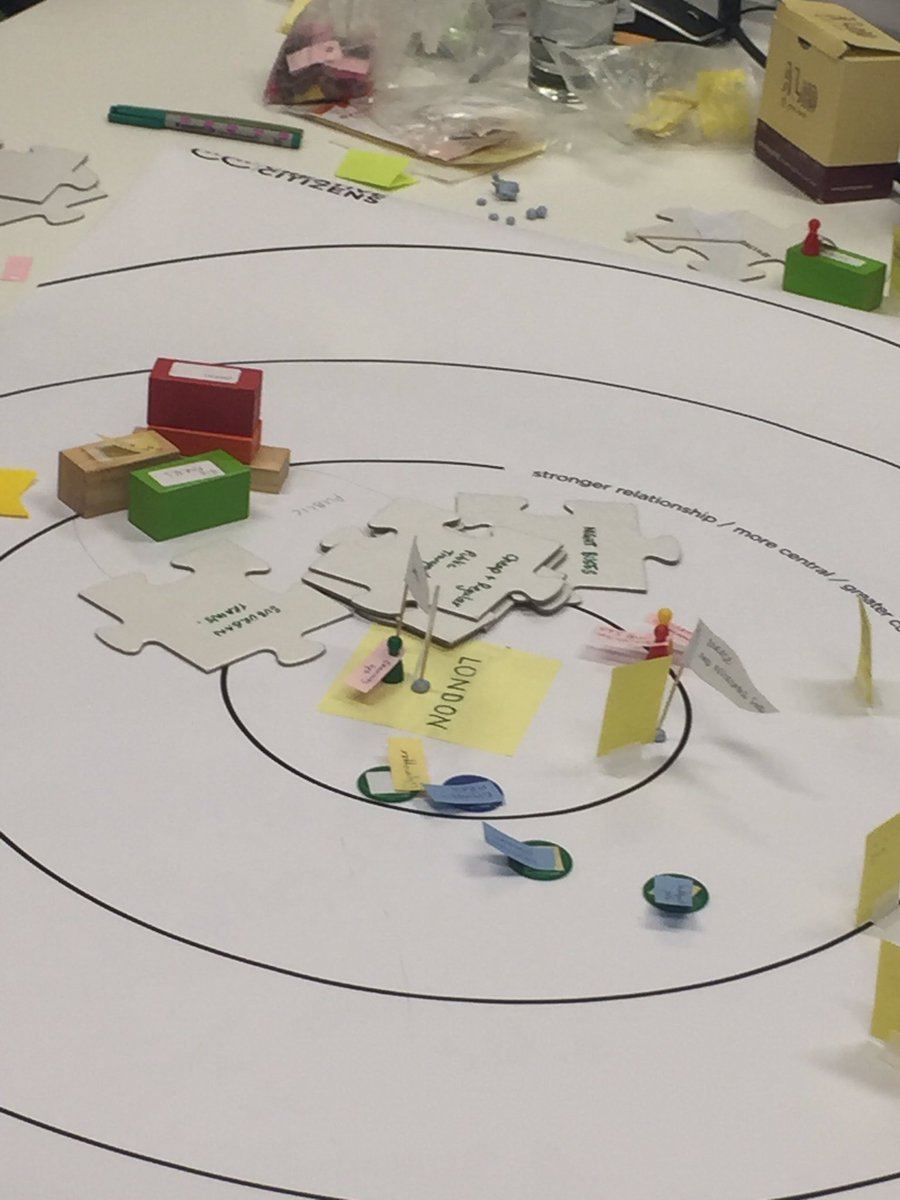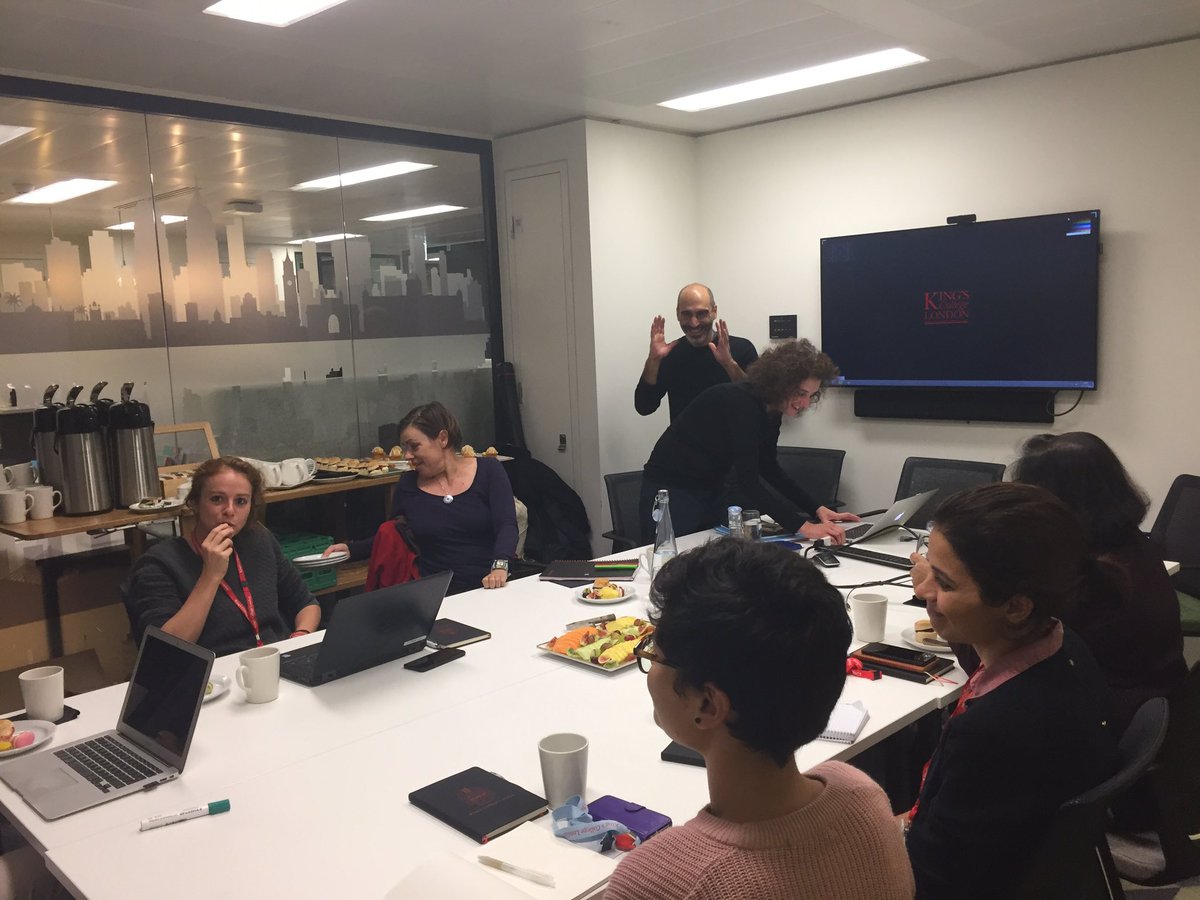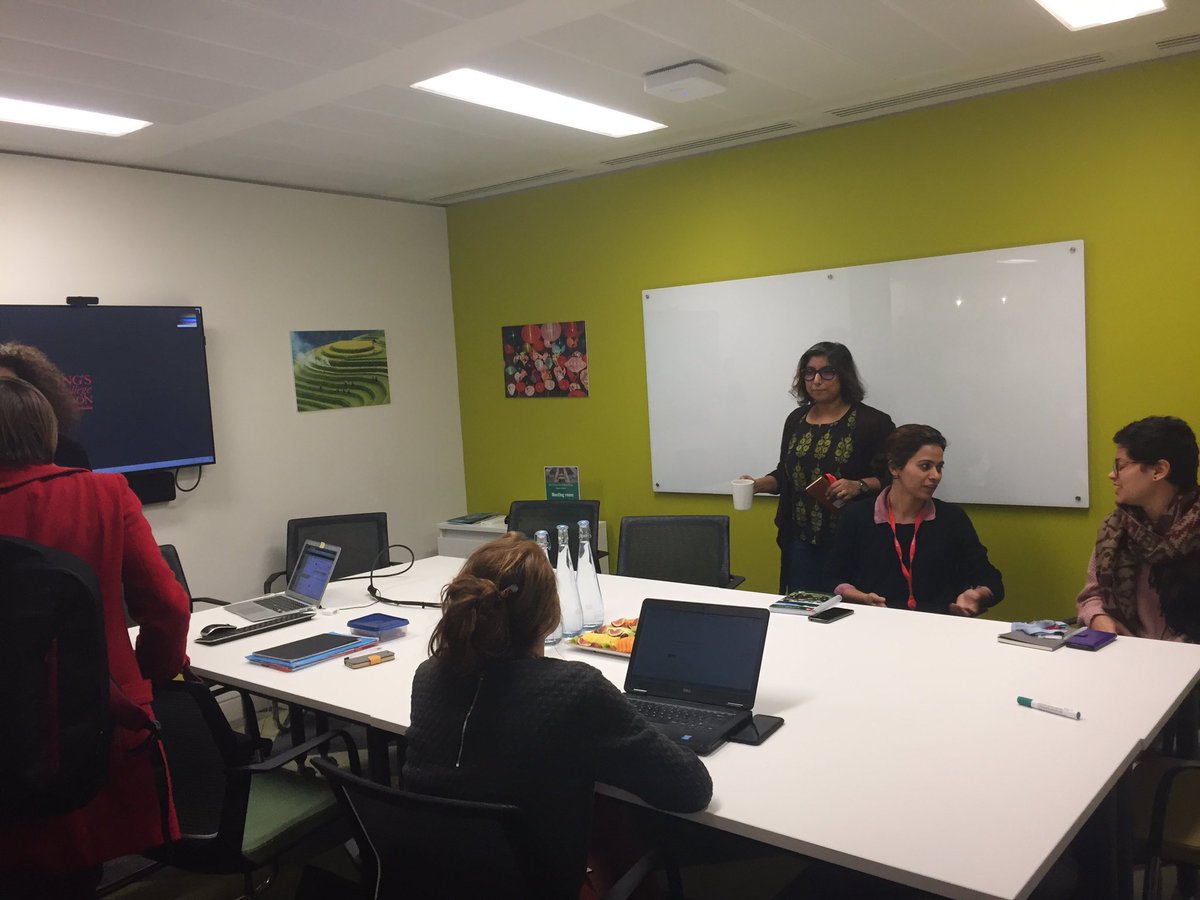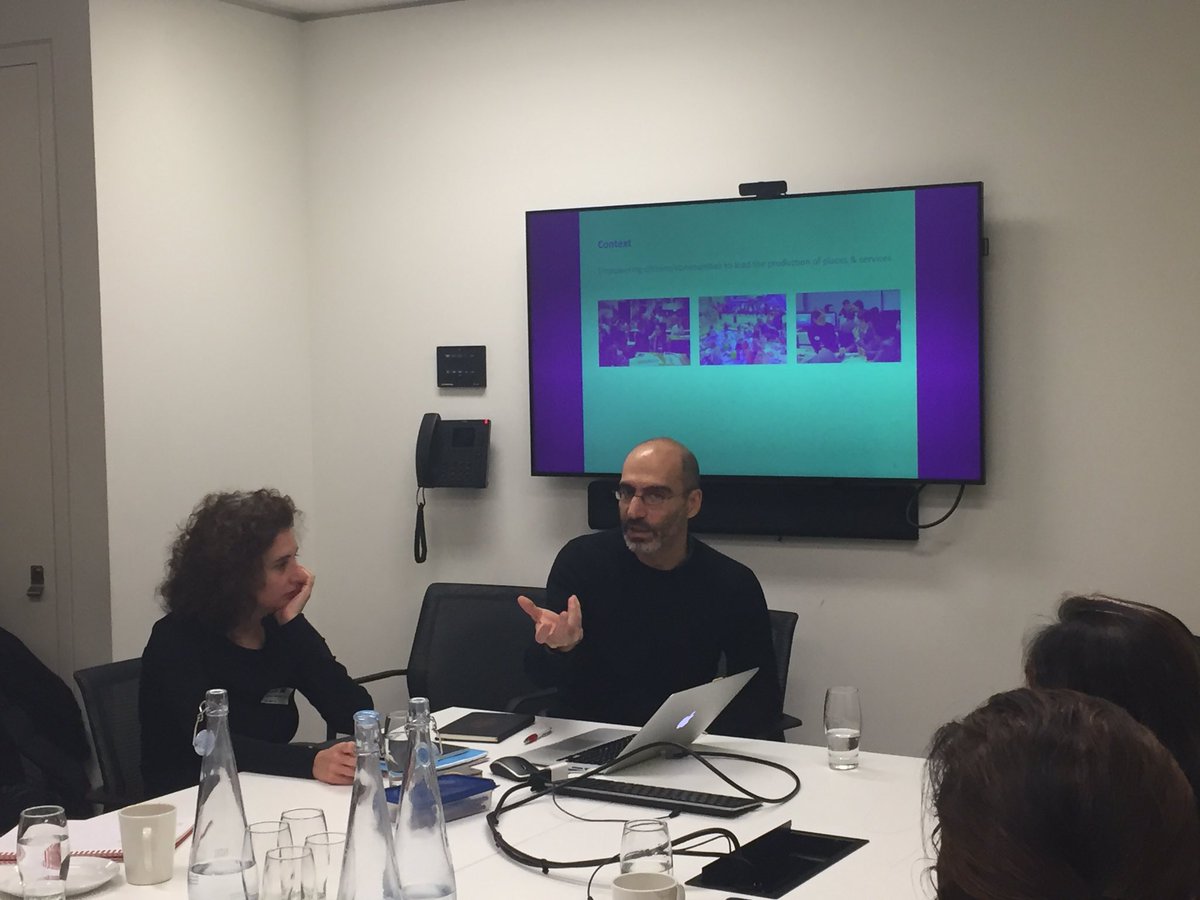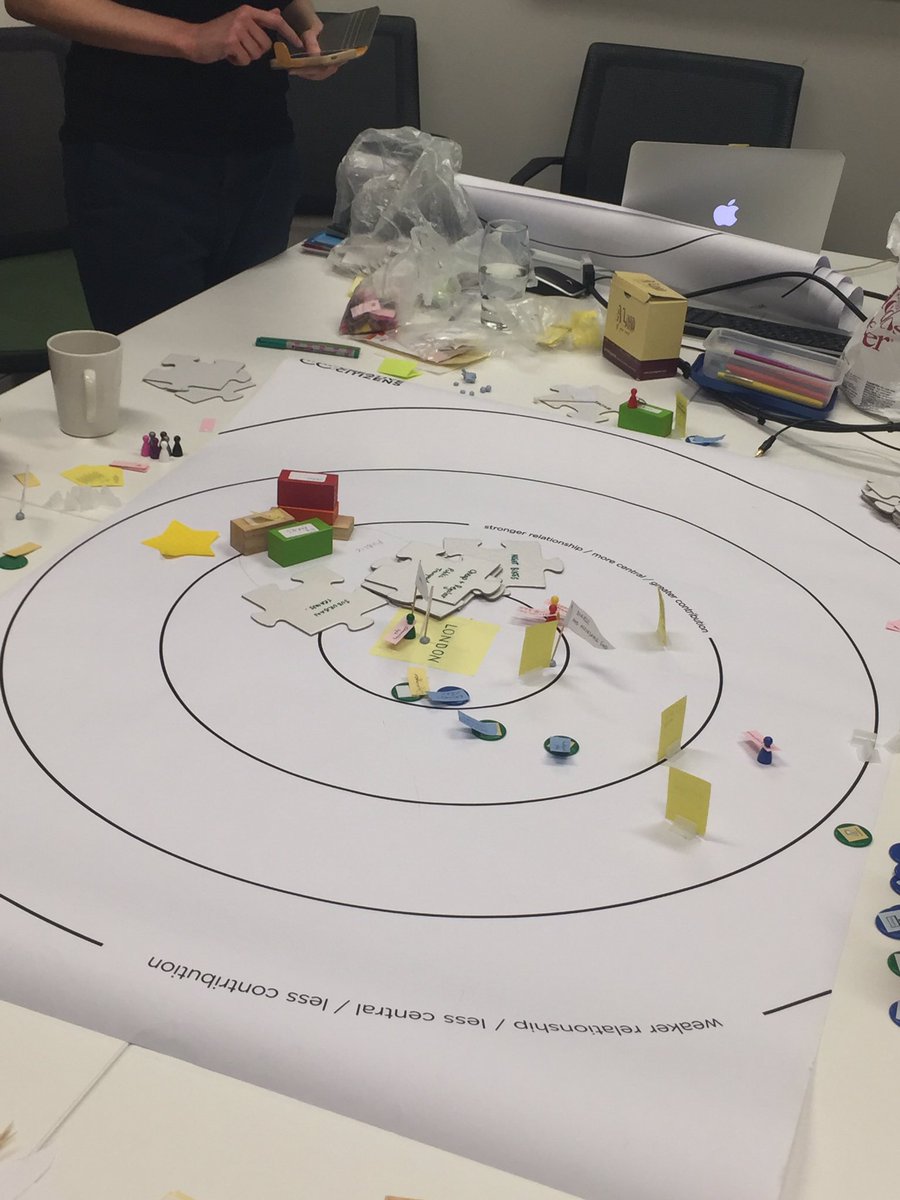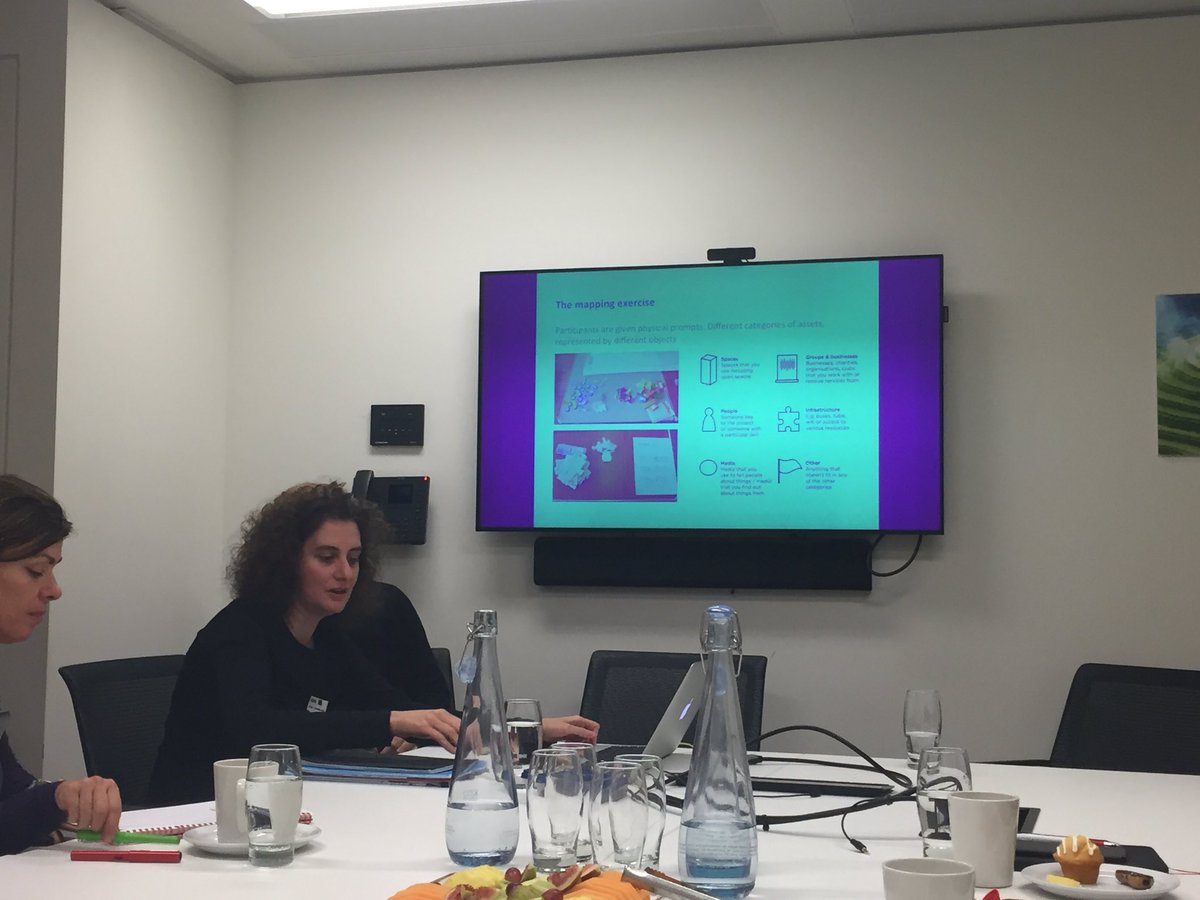Method: Community Asset Mapping Workshop
DATE
Tuesday, 13 November 2018
LOCATION
King's College London, UK
Image Credit: Marta Koch
On Tuesday November 13, 2018 we were joined by Dr. Katerina Alexiou and Dr. Theodore Zamenopoulos from The Open University for an informative and immersive workshop on Community Asset Mapping. The workshop was attended by project team members Dr. Ayona Datta, Dr. Melissa Butcher, Dr. Srilata Sircar, and Ms. Marta Koch. Other participants included doctoral candidates and postdoctoral fellows from the Urban Futures Research Domain at King’s College London.
The workshop took off with an introductory presentation of the project aims and objectives by the team members, including the scope for using CAM as a key method. This was followed by a broad overview of the CAM method from Katerina and Theo – both developers and long-time practitioners of the method.
This paved the way for the workshop participants to dive into a round of CAM and thereby gain a first-hand understanding of how the method works as a research tool.
All Image Credits: Marta Koch
In this particular form of CAM, a schematic map of concentric circles is used as the base map to indicate the relative value and importance of particular assets with regard to the main project objective which is placed at the central location at the beginning. Given the diversity among the workshop participants in terms of age, socio-cultural background, and research interests, the first round of discussions were aimed at finding a central project around which the mapping exercise could be built. In this case the shared project of interest that was placed at the centre of this CAM exercise was “improving the city of London”.
The participants then spent a few minutes thinking through various assets that exist in and around the city of London that are of value and interest from their own perspectives. This was facilitated by the material prompts in the form of blocks, flags, post-it notes, and other symbols representing the different kinds of assets in existence. The participants then took turns placing their symbolic assets at different positions on the concentric circles and justifying the choice of their asset and its position on the map to the rest of the group. Each choice led to an interesting discussion, moderated by the facilitators through follow-up questions and inputs. In particular Katerina and Theo took care to point out the underlying relationships and overlapping appeals between the different assets.
In the course of the exercise a number of significant learnings emerged. For starters it became clear quite early on that the exercise is most helpful when conducted among a homogeneous group with a clearly-defined shared aspirational project. It was also noted that the ensuing discussions were as important as the final result (i.e. the map) and that the task of the facilitators was to ensure a fair and democratic discussion. This would also necessitate an ongoing process of analysis even as the exercise unfolds, by detecting underlying relationships and mapping them onto the scheme of circles.
In conclusion, the CAM method was found to be very interesting and potentially insightful for the nature of questions that the project concerns itself with. At the same time it became evident through the workshop that it was a skill-intensive method, the effectivity of which would depend to a large extent on the competence of the facilitators. The participants were very thankful to Katerina and Theo for their deft demonstration of this innovative method. This particular mode of doing CAM has been used in various neighbourhood-level projects around London by Katerina and Theo alongside their Arts and Humanities Research Council (AHRC) 'Empowering Design Practices: historic places of worship as catalysts for connecting communities' project research team colleagues with great success. To learn more about these projects please go to their website here.
By Dr. Srilata Sircar, Project Postdoctoral Research Associate, Urban Futures research domain, Department of Geography, King’s College London


